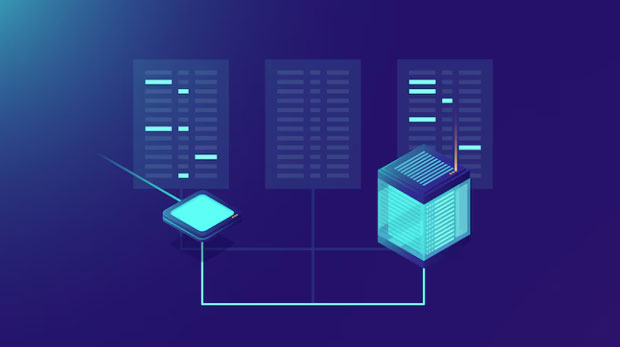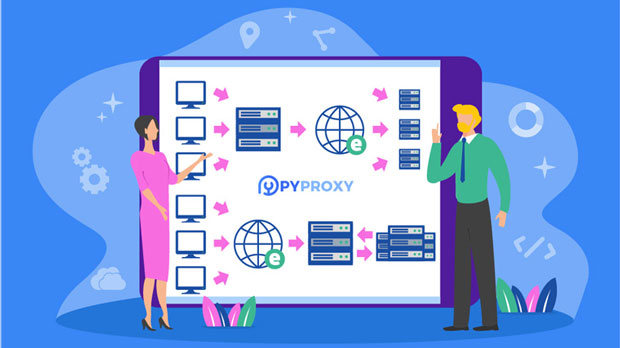In the modern digital era, online privacy has become a critical concern for individuals and businesses alike. One of the most effective ways to protect anonymity while browsing the web is through the use of ISP Proxy servers. These servers act as intermediaries between the user's device and the internet, masking the user's IP address and routing traffic through a different location. This helps users maintain privacy by preventing websites and other online entities from directly tracking their activity. This article will explore how ISP proxy servers contribute to enhancing anonymity and the specific ways in which they improve online privacy. 1. What is an ISP Proxy Server?An ISP proxy server is a service that provides a gateway between users and the internet. It acts as a middleman by forwarding user requests to websites or other online resources. When a user connects to an ISP proxy, their original IP address is replaced with the proxy server’s IP address. This process helps obscure the user’s location and identity, ensuring that any traceable activity on the internet cannot be directly linked back to the individual.The proxy server can either be provided by the user’s Internet Service Provider (ISP) or a third-party service. By utilizing the ISP's network infrastructure, proxy servers can provide a more reliable and stable connection while also offering enhanced privacy features. The fundamental principle behind an ISP proxy server is to mask the user's real IP address, which is crucial for maintaining anonymity on the web.2. Masking the Real IP AddressThe most significant way that ISP proxy servers enhance anonymity is by masking the user's real IP address. Every time a user connects to the internet, their device is assigned an IP address, which acts as a unique identifier. This IP address is visible to websites, online services, and other entities, enabling them to track the user’s location and behavior.When an ISP proxy server is used, the user’s IP address is hidden behind the proxy server’s IP address. This means that any request made from the user's device appears to originate from the proxy server instead of the user’s actual location. By masking the real IP address, ISP proxy servers prevent websites from obtaining sensitive information about the user, such as their geographical location, ISP, or browsing history.This level of anonymity can help protect users from surveillance, data collection, and targeted advertising. It also makes it more difficult for hackers or malicious actors to track the user’s online behavior or exploit vulnerabilities associated with the user's device.3. Geographic Location ConcealmentOne of the key advantages of using ISP proxy servers is the ability to conceal the user's geographic location. When a user accesses a website without a proxy, the site can often determine the user's location by analyzing the IP address. This location data can be used for a variety of purposes, including offering location-based content, tracking users, or even restricting access to certain services.By using an ISP proxy server located in a different region or country, the user can access the internet from an entirely different location. For example, if a user in Europe connects to an ISP proxy server located in the United States, the websites they visit will perceive the user as accessing the internet from the U.S. This allows the user to bypass geographic restrictions, access content unavailable in their region, and maintain a high level of privacy.This feature is particularly useful for users concerned about geo-targeted advertisements or location-based surveillance. It also allows individuals in regions with strict internet censorship to access a wider range of online content and services without revealing their true location.4. Enhanced Security and EncryptionISP proxy servers often come with additional layers of security, such as encryption, that further enhance the user's privacy and anonymity. While a regular connection between a user and a website may be vulnerable to interception or hacking, a proxy server can encrypt the data transmitted between the user and the server, making it more difficult for attackers to gain access to sensitive information.Encryption is especially important when using public or unsecured Wi-Fi networks, as these environments are often targeted by cybercriminals seeking to intercept communication. By using an ISP proxy with encryption, users can ensure that their browsing activity is secure and private, even in potentially dangerous networks.Moreover, an ISP proxy server can also provide a level of security against malware and phishing attacks. By filtering incoming traffic, the proxy server can block malicious websites and prevent the user from accessing harmful content. This added layer of protection enhances the overall anonymity of the user while they navigate the internet.5. Prevention of Tracking and Data CollectionAnother significant benefit of ISP proxy servers is their ability to prevent tracking and data collection by websites, advertisers, and online services. Many websites use cookies, tracking scripts, and other techniques to collect data about users, such as their browsing habits, interests, and demographic information. This data is often used for targeted advertising or sold to third-party companies.ISP proxy servers help mitigate this problem by masking the user’s real IP address and preventing websites from identifying or tracking them across sessions. As the proxy server handles all outgoing requests, websites are unable to associate activity with a specific individual. In addition, some proxy servers offer features that block cookies or limit the information shared with websites, further enhancing privacy.For users concerned about digital footprints and online profiling, ISP proxy servers are an effective tool for minimizing data collection and maintaining a higher level of anonymity.6. Combating ISP-Level SurveillanceWhile ISP proxy servers offer several advantages for individual privacy, they also play a critical role in combating surveillance conducted by ISPs. Internet Service Providers (ISPs) often monitor and log user activity, potentially sharing this information with government agencies or third parties. This surveillance can compromise user anonymity and privacy.By routing internet traffic through an ISP proxy server, users can effectively obscure their online activity from their own ISP. As the proxy server acts as an intermediary, the ISP can no longer see the details of the user’s browsing behavior. This is especially important for individuals living in regions with invasive government surveillance or strict data retention laws.By using a proxy, users can regain a degree of control over their online privacy, preventing their ISP from tracking their internet usage and potentially sharing that data with external entities.7. Limitations and ConsiderationsWhile ISP proxy servers offer significant benefits in terms of anonymity and privacy, they are not a foolproof solution. There are certain limitations to be aware of. For instance, while ISP proxies can mask the user's IP address, they may not provide complete anonymity in all situations. Advanced tracking technologies, such as browser fingerprinting, can still potentially identify users based on their device characteristics.Additionally, some ISP proxy servers may log user activity or have security vulnerabilities that could compromise anonymity. It’s essential to choose a reputable proxy service that prioritizes user privacy and employs strong encryption and security practices.Users should also be aware that while proxies can prevent some forms of surveillance and tracking, they may not completely protect against all online threats, especially if the user is not practicing safe browsing habits.In conclusion, ISP proxy servers provide an effective means of enhancing anonymity and privacy on the internet. By masking the user’s IP address, concealing their geographic location, providing encryption, and preventing tracking, ISP proxies offer a valuable layer of protection for individuals who prioritize online privacy. However, it’s important for users to be mindful of the potential limitations and select reliable proxy services to ensure a secure and anonymous browsing experience. As online threats and surveillance continue to evolve, ISP proxy servers remain a vital tool for safeguarding digital privacy.
Apr 09, 2025
![arrow]()




























































